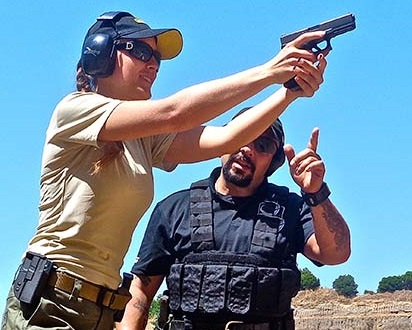Hand+Gun™ Pt 1: Foundations of Alternate Grip, Posture and Aim
The world is different for a civilian reacting to a threat on "the street". Unfortunately, those differences are far too unknown to a large part of the concealed carry community.
The facts are harsh.
Over half of those threats start within 5 feet, in the dark, from multiple attackers, where you have to face the reality that, without the right technique and equipment, attackers will get their hands on you and your gun, which is probably the worst possible scenario.
It's not about drawing fast. Sometimes it's not about drawing at all. It's not about sight alignment, sight picture, trigger control, stance or recoil management. It's not about shooting "from retention". It's not about martial arts, boxing, grappling, kicking, striking, throwing or any other fighting system.
It's about reversing an unavoidable response-time deficit and gaining the advantage. It's about knowing the behavior of potential attackers, anticipating and limiting their options. It's about continuous movement that's dynamic and adaptable, but also fits within a tested set of proven principles.
It's about shooting faster than the eye can communicate to the brain. And it's about ensuring that you will always be accurate enough to never hurt an innocent bystander.
In Part-One of the Hand+Gun series you'll learn about:
- The Escalation - This is the "strategy before the strategy". It's learning what leads up to a conflict, what ignites one and what makes you vulnerable. We'll learn ways to stave off a threat when you can and how to deal with one when you can't.
- Safety and Effectiveness - We'll be learning movements and manipulations many students have never seen before. This means developing new "muscle memory" so you can call on those new skills without reservation. We make sure you learn properly here, so you can practice properly at home.
- Shaped Impulses - What happens in the first 0.12 to 0.19 seconds not only has to be automatic, it has to be the right thing to do. Traditional "flinch theory" only tells half of the story. And the way it's being taught by many instructors can actually slow you down.
- Counter Offense - There is no room for any concept of "defense" in these situations. Every part of how you deal with a "deadly force" threat must be done with a counter-offensive mindset and counter-offensive movement. Moreover, those movements must be technically "crude" to work on the street.
- Active Postures - A big part of being successful in this kind of conflict comes from using postures that offer protection while you're simultaneously launching a counterattack.
- Alternate Grips - When it comes time to shoot, you need to know how to bring your gun in play so it'll never be compromised. At these distances, there is no time to clear malfunctions.
- PEK Aiming - Non-visual aiming is the most misunderstood aspect of shooting. But it plays a critical role in street combatives. We throw baseballs, shoot basketballs, pass footballs, hit golf balls and kick soccer balls, all without using sights.

Dallas TX
Don Gulla
